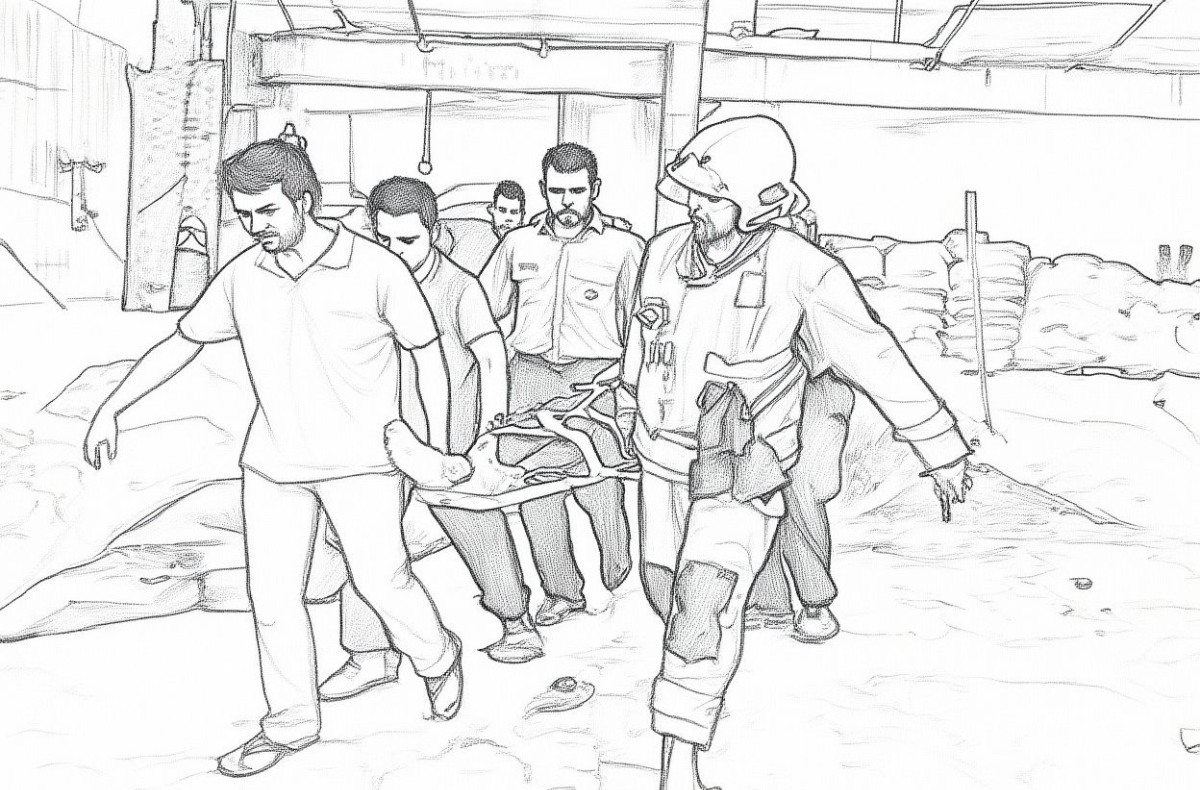Although workplace safety is a basic right of workers, official reports and field evidence paint a grim picture of working conditions in Iran. According to forensic statistics for 2024–2025, 1,986 workers lost their lives and 26,548 were injured. Falls from height accounted for 42% of deaths, followed by being struck by objects, electrocution, burns, and lack of oxygen. Tehran, Isfahan, Razavi Khorasan, East Azerbaijan, and Mazandaran recorded the highest casualties. At the same time, a senior Health Ministry official offered an even grimmer figure: around 10,000 workplace deaths annually—an average of 27 per day—more than triple the official count.
The Gap Between Numbers and Reality
Reports in 2021–2022 cited 3,826 occupational deaths among insured workers, a number far below reality since informal workers are excluded. In 2021, the Social Security Organization registered 45,000–47,000 accidents and over 700 deaths among insured workers, showing a huge gap with forensic figures. These discrepancies reflect widespread underreporting.
Why are the numbers unreliable? Contradictions between the three main authorities (Forensics, Social Security, and the Labor Ministry), manipulation of death certificates, an informal economy employing over 10 million uninsured workers, a weak inspection system (just 1 inspector per 15,000 formal employees, compared to 1 per 300–500 in advanced economies), and inspectors often dependent on employers. Although Iran ratified the ILO Convention No. 155 on occupational health and safety in 2023, no systemic improvements have followed, and in 2024 no new conventions were adopted.
Global Comparison
Based on official figures, Iran’s occupational death rate is about 8 per 100,000 workers. This rate is 3.5 in the U.S. (2023) and 1.66 in the EU (2022). Even officially, Iran is nearly twice as deadly as the U.S. and more than five times worse than Europe. If the 10,000 deaths/year estimate is correct, the real rate may be 15–20 per 100,000—a situation closer to war zones than workplaces.
The Hidden Social Consequences
The death or disability of a breadwinner means family collapse, with no adequate safety net. Many injuries—exposure to toxins, skeletal and muscular disorders—emerge years later and are absent from official statistics. This creates a cycle of poverty and illness reinforced by temporary contracts, outsourcing, and wages below subsistence.
Protest and Repression
Field data from 2024 show widespread discontent over wages, safety, and contracts: at least 2,396 protests and 169 strikes took place across 31 provinces and 70 cities—covering oil and gas project workers, teachers, nurses, and municipal employees. Meanwhile, there were 129 arrests, 119 prison sentences, and 74 dismissals of labor activists.
A striking example of inaction came on September 22, 2024, when a methane explosion at Madanju Coal Company killed 53 workers and injured 14 more. In summer, reports surfaced of deaths in refineries due to extreme heat and long shifts. These tragedies coincided with oil, gas, and petrochemical protests—and their repression—in cities such as Arak and Ahvaz.
Law on Paper, Danger in Practice
Reports of forced overtime in oil and healthcare, long-delayed wages, mass layoffs, and lack of protective gear show that even the clear provisions of the Labor Law—banning forced labor and requiring safety—are systematically violated. Internationally, Iran’s rejection of core conventions on freedom of association and collective bargaining has strangled independent organizing. State-created “Islamic labor councils” function as tools of surveillance and repression, leaving workers without real unions or collective negotiation.
Central Point
Even by the most optimistic reading, Iran’s occupational death rate is multiple times higher than Europe and above the U.S. The gap between official figures and workplace reality shows that many accidents are never recorded. The 2024 wave of protests, alongside dozens of arrests and dismissals, proves that the current system not only fails to ensure safety—it actively suppresses workers’ organizing.
At a structural level, workers are only heard when they are independent, organized, and strike-ready. The experience of the oil and gas sector last year confirms this. But the absence of independent unions and the normalization of temporary contracts have weakened bargaining power and raised the cost of protest. As long as state-controlled councils replace genuine unions, and repression is the default response to labor gatherings, the cycle of accident → protest → repression → silence will repeat.
The Islamic Republic—by hiding data, ignoring international conventions, and crushing labor organizing—has turned workplace death into an institutionalized crisis. This crisis can only be confronted through organized resistance, international pressure, and persistent demands. Progress will not come without the right to independent unionization, the freedom to strike, and workers’ oversight of workplace safety. Real reform requires recognition of independent unions, abolition of labor outsourcing, immediate rebuilding of inspection systems, and transparent reporting of accidents—steps that can only be forced through a unified labor movement with international backing.
Editorial Board of Pezhvak-e Kar Iran (Echo of Iran’s Labor)






